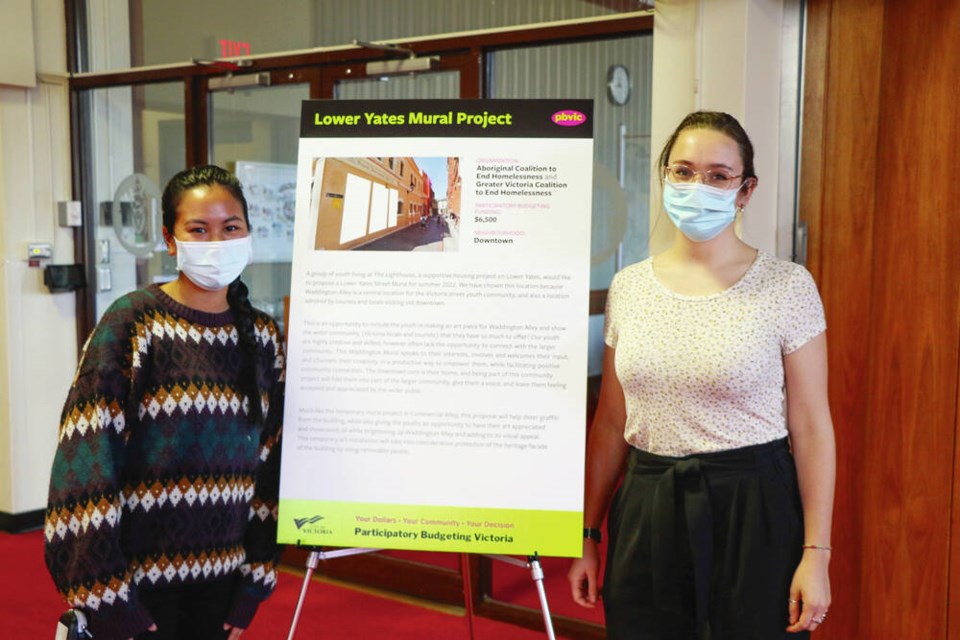Youth living in a supportive housing project in downtown Victoria will get a chance to showcase their artistic talent with a public mural.
It is one of six projects led by community members and aimed at building social connection that received funding through the City of Victoria’s participatory budgeting process, which gives residents a chance to vote on how to spend a portion of the city’s budget.
The Aboriginal Coalition to End Homelessness and the Greater Victoria Coalition to End Homelessness will receive $6,500 to support youth living at The Lighthouse to create a mural in Waddington Alley.
The idea for a mural was proposed after staff asked the youth what they would like to do for downtown if they had money. Callista Tolentino, team leader at The Lighthouse, said the mural will provide an outlet for the young people’s creativity.
“And I think it’ll mean a lot to them that their city and their community members have voted for this project and are showing their support in some way,” Tolentino said.
Just over $54,000 was awarded this year, the fourth year Victoria has held participatory budgeting. People making proposals were asked to focus on encouraging social connection and belonging.
The grants include:
• $20,000 to Theatre Skam to create short documentaries combined with live performances that describe the history of various locations in Victoria.
• $15,750 to the Greater Victoria Placemaking Network to engage an Indigenous artist to paint the asphalt in two traffic-calming locations near downtown with designs that reflect what was once there.
• $5,000 to the Victoria Arts Council to commission a Black, Indigenous, or person of colour artist to design a billboard for the exterior of the gallery in Old Town.
• $4,830 to the Oaklands Community Association to host an event to screen a family friendly film in Oaklands Park, along with kids’ activities, local art displays and food trucks.
• $2,500 to create a community hub in Vic West with a little free library and a community notice board.
Participatory budgeting is used in about 3,000 cities. In the Brazilian city of Porto Alegre, where it was first developed in 1989, residents decide how to spend millions of dollars, representing about 20 per cent of the municipality’s total budget.
Victoria Mayor Lisa Helps said participatory budgeting is an educational process that helps people understand the difficult decisions council has to make when allocating funding.
“And it empowers the community to make decisions, but also to understand the democratic decision-making process and the budgeting process,” she said.
Helps said she hopes the next city council will consider expanding Victoria’s participatory budgeting process to a larger sum, like $500,000 to $1 million, with residents making decisions about what should be a priority for funding.
For 15 years, Toronto’s community housing agency gave tenants an opportunity to vote on improvement projects, such as playground repairs and building upgrades. The program was paused in 2017 to review and improve the model, after providing $5 million the previous year for more than 100 projects.



